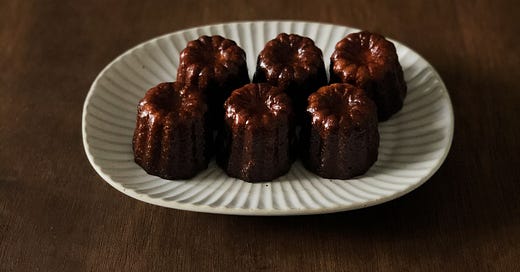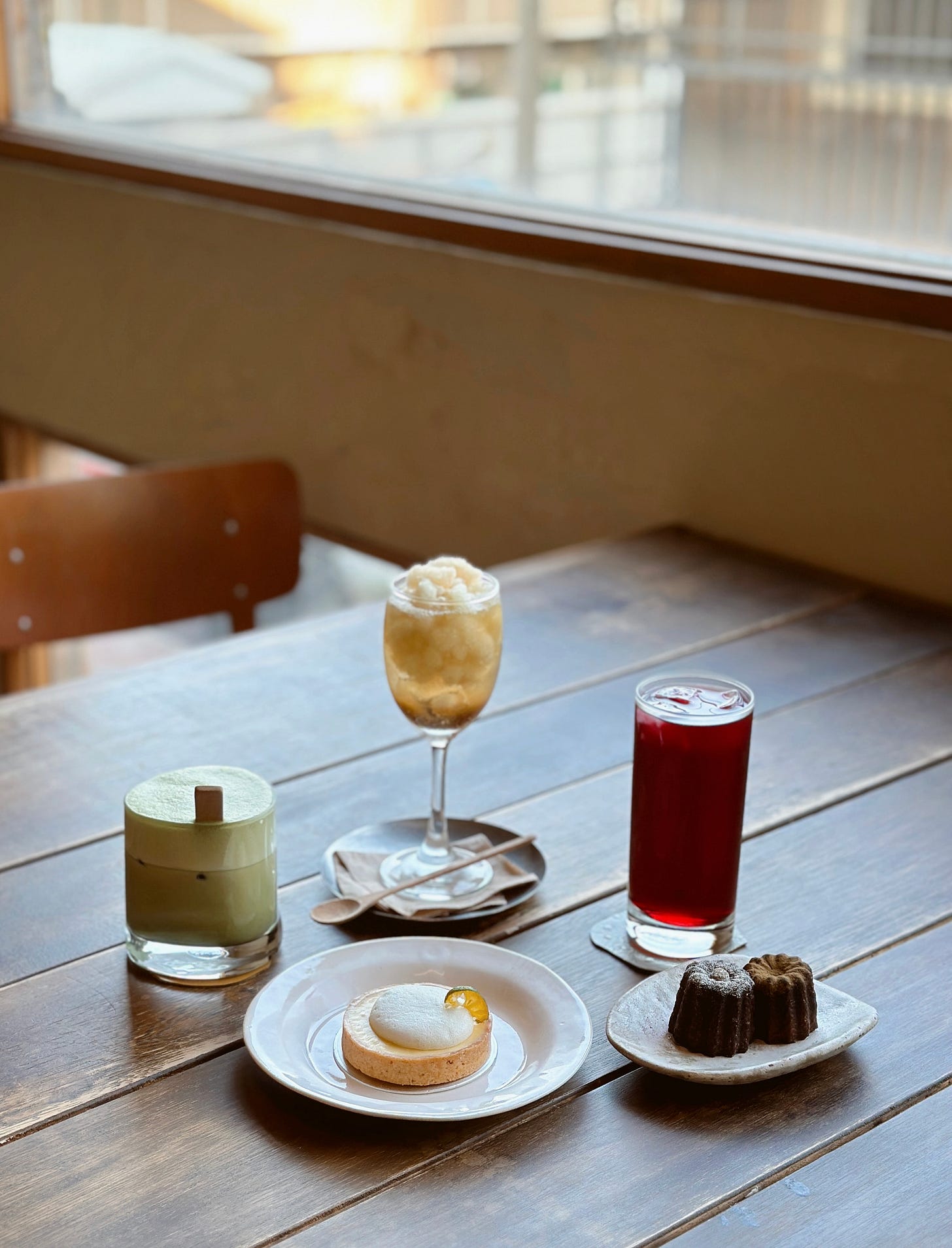Canelés de Bordeaux are perhaps one of those perceptibly underappreciated and unostentatiously plain French pastries. Its unembellished mahogany glisten is unassuming and simple compared to other delicate and intricately adorned French desserts. Behind its austere simplicity, however, lies an inviting, aromatic interweave of caramelised sugar, rum, and vanilla.
The hallmark of a good canelé to me yields a deeply burnish, caramelised, and crisp crust with a soft, vanilla-and-rum-scented baked custard. The scorched crust adds a lingering aroma of burnt sugar with rich notes of rum, and an almost adult-tasting hint of bittersweetness, while the soft, custardy, mellow interior offers textural contrast. A well-made canelé is not hard to appreciate and relish, but I have a hunch that those who do not like canelés may have had not-quite-good ones, as I did before rediscovering my love for it. Imagine a thick, dense canelé with a waxy hardened crust that has the potential to break one’s tooth; and a stodgy, non-porous core reminiscent of a rubbery rum-tasting kuih - quite the textural buzzkill.
I remember having one of the most impressionable canelés at Petit Pain in Singapore - it was the literal definition of what a good canelé is to me - evenly caramelised, thin, crackled shell; soft, custardy interior; heady notes of dark rum and honeyed vanilla, possessing all the ideal traits in one. It is easily one of the best we have locally. Marsh in Tainan, on the other hand, also left me inspired with their minimalist approach in embellishing their canelés and their ever-changing plethora of tea-forward flavours. Think tieguanyin, oolong, earl grey. The one I had, in particular, has a roasty infusion of tieguanyin tea that punctuates the oaky richness of rum; strong yet nuanced, bringing forth a novel yet familiar flavour.
Gathering every bit of inspiration from some of the best canelés I had, I find canelés are but a blank canvas for every flavour imaginable. With the batter comprising of milk, eggs, sugar, flour, rum, vanilla, most of the components are, to some degree, customisable to complement the very flavour profile you intend to create. Steep some oolong tea leaves in the milk for an added toasty, tannic, floral complexity; replace rum with kahlúa for a vibrant boost of caffeine; or add matcha or houjicha powder for an earthy, vegetal spin. You can even fill your canelés with lemon curd or salted caramel to accentuate or complement the main flavour profile you are creating. There is so much potential for your creative interpretation and personalisation, as long as the adaptation and changes to the recipe proportion is not too radical. I have made some tea flavours like pu-erh canelé (pictured) and Thai milk tea canelé, too, with much success.
The thing with baking canelé is that it is not arduous, but it can definitely be unpredictable, even having baked aplenty. The steps to making canelés are pretty straightforward and easy to follow. However, it requires patience as the entire process can take up to 3 days, and is an extremely time-consuming and dedicated undertaking. From making the batter, prepping the moulds, to the temperamental baking process, it requires quite the effort in understanding the technicalities in each and every step and a watchful eye to ensure everything goes on smoothly. But trust me, your involvement in baking your canelés will result in something that can never hold a candle to those commercially available ones.






